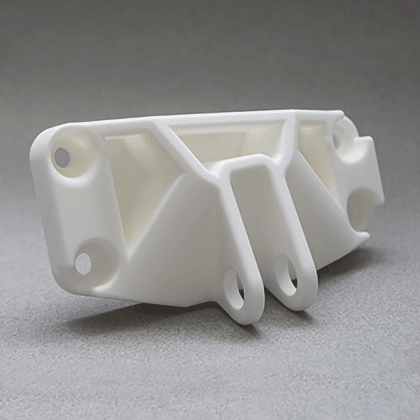Unlocking the Secrets of SLS Printing: Discover Its Game-Changing Impact Across Industries!
Selective Laser Sintering (SLS) printing has emerged as a revolutionary technology in the realm of modern manufacturing, reshaping how industries create products. As we delve into the intricacies of SLS printing, it becomes clear that understanding this technology is vital for various sectors aiming to innovate and enhance their production processes. From rapid prototyping to the production of complex components, SLS printing stands at the forefront of additive manufacturing, offering unparalleled benefits. In this article, we will explore the fundamentals of SLS printing, its diverse applications across industries such as aerospace, automotive, healthcare, and consumer goods, as well as the significant advantages that make it a game changer in the manufacturing landscape.

What is SLS Printing?
SLS printing is a form of 3D printing that utilizes a high-powered laser to fuse powdered materials into solid objects. The process begins with a thin layer of material, typically nylon or other thermoplastics, being spread across a build platform. The laser selectively scans the powder, sintering it together according to the digital design. After each layer is completed, the platform lowers, and a new layer of powder is applied, repeating the process until the final object is created. This layer-by-layer approach allows for intricate designs and complex geometries that are often impossible with traditional manufacturing methods. One of the compelling features of SLS printing is its ability to use a variety of materials, including metals and ceramics, which broadens its applicability across different sectors.
Applications of SLS Printing Across Industries
SLS printing is making waves across numerous industries, reshaping manufacturing processes and enhancing product development. In the aerospace industry, companies are utilizing SLS printing for rapid prototyping of lightweight and durable parts, which can lead to significant reductions in material waste and production time. The automotive sector benefits from SLS technology by producing complex components and tooling that streamline manufacturing and improve performance. Meanwhile, in healthcare, SLS printing enables the customization of medical devices and prosthetics tailored to individual patients, enhancing comfort and functionality. The consumer goods industry also leverages SLS printing to create everything from prototypes to final products, allowing for faster market entry and greater design flexibility. Each of these applications showcases the transformative power of SLS printing, making it an essential tool in modern manufacturing.
Aerospace Industry
In the aerospace sector, SLS printing is particularly valuable for prototyping and producing lightweight parts that meet strict regulatory standards. Engineers can quickly iterate designs, create functional prototypes, and even manufacture end-use components that contribute to fuel efficiency and performance. The ability to produce complex geometries without the constraints of traditional machining makes SLS an indispensable tool for aerospace innovation.
Automotive Industry
The automotive industry harnesses SLS printing to create intricate components and tooling that enhance the manufacturing process. From functional prototypes used in testing to customized tooling that improves assembly line efficiency, SLS printing allows automotive engineers to explore innovative designs that might be too costly or time-consuming to produce using conventional methods.
Healthcare Sector
In healthcare, SLS printing profoundly impacts the customization of medical devices and prosthetics. By using patient-specific data, manufacturers can create tailored solutions that improve fit and functionality, leading to better outcomes. The ability to produce small batches of customized items quickly is revolutionizing how medical professionals approach treatment and patient care.
Consumer Goods
The consumer goods sector is another area where SLS printing shines, enabling the rapid creation of prototypes and final products. Companies can test designs, gather consumer feedback, and iterate more swiftly than ever before. This agility not only accelerates time-to-market but also fosters innovation, allowing brands to stay competitive in a fast-paced market.
Advantages of SLS Printing
The advantages of SLS printing over traditional manufacturing methods are numerous and compelling. First and foremost, SLS printing offers remarkable design flexibility, allowing the creation of complex shapes and intricate features without the need for extensive tooling. This flexibility leads to material efficiency, as SLS printing often uses powdered materials that can be reused in subsequent prints, minimizing waste. Additionally, the reduced lead times associated with SLS printing enable companies to bring products to market faster, responding to consumer demands with agility. By streamlining production processes and reducing costs, SLS printing is paving the way for a more efficient and innovative manufacturing landscape.
SLS Printing: A Transformative Technology Across Industries
In conclusion, SLS printing is transforming the landscape of various industries, from aerospace to consumer goods, by providing innovative solutions that enhance manufacturing processes. Its ability to create complex designs, reduce material waste, and expedite production is making it an indispensable technology in today’s fast-evolving market. As industries continue to explore the potential of SLS printing, its importance in future manufacturing processes will only grow, highlighting the need for businesses to embrace this game-changing technology for continued innovation and competitive advantage.



